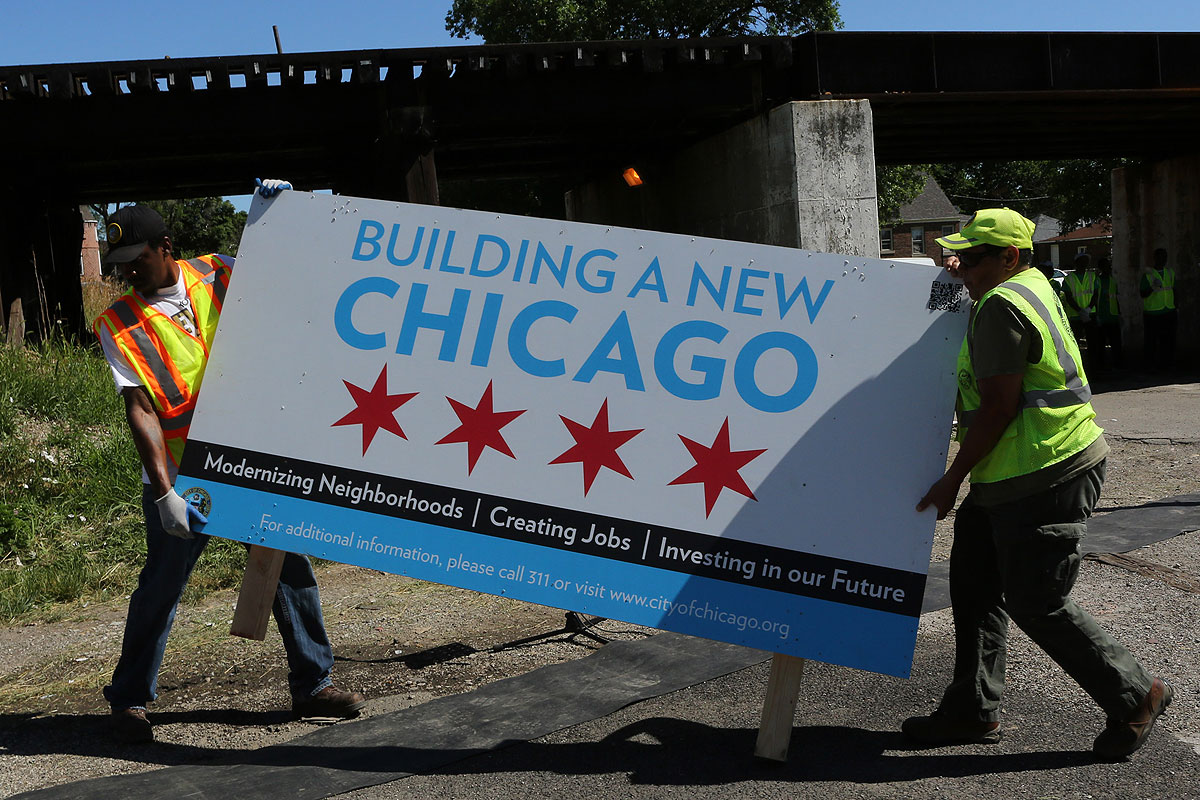A couple years ago, I covered a summer jobs program called One Summer Plus, which gave six-to-eight-week positions to kids in some of Chicago's most violent neighborhoods. It worked: violent-crime arrests fell by 43 percent, and it worked whether or not they were given cognitive-behavioral therapy (another promising form of intervention). The act of being mentored at a job seemed to have the same effect.
The program, though, was targeted to kids who were "on the cusp," according to the study's lead author Sara Heller, now an associate professor in economics at the University of Michigan. On average they were C students who'd missed a few weeks of school—at risk of becoming disconnected, as sociologists say, but not there yet. But Heller mentioned that the program was being tested again, and this time youths were being recruited from the juvenile justice system, a harder test.
The second group was older (18 years on average, compared to 16), more likely to have been arrested (almost half had an arrest record, versus a fifth), missed more time in school (three months versus six weeks), had worse grades, and was all male (compared to 38 percent of the first group).
And according to a new NBER working paper, it worked, again. Violent-crime arrests fell 33 percent over a year. It's not as big a drop by percentage, but given the demographic that meant a larger decline in raw numbers: 7.9 fewer violent-crime arrests per 100 participants, compared to 4.2 for the first group.
Furthermore, even when you exclude data from the months of active employment, there's still a 26-percent reduction in violent-crime arrests between the two pooled studies, suggesting the effect doesn't stem from just giving the kids something to do.
"My suspicion going in was that it wasn't going to work for that population, partly because a lot of the employment programs in the literature haven't been super successful targeting an out-of-school, out-of-work population," Heller says of the new study. "The thing that surprised me about the new results is that we basically replicated the initial results with this new population that I suspected was going to be less responsive to the program. That was a very positive surprise."
It's not a magic bullet. In fact, arrests for property crime go up, a finding that echoes previous studies, such as the famous Moving to Opportunity study about youths who moved from high-poverty public housing to lower-poverty neighborhoods, but one that's still not fully understood.
"They find this similar pattern there where violence goes down but potentially property crime goes up," Heller says of the MTO study. "And that's clearly an issue of being in a different space—you're in a richer neighborhood, but your same peers aren't around. I think the opposite violence and property crime effects are something that maybe hasn't been entirely internalized in the literature, but it is something we see in multiple places. So it's worth thinking a little more about how the different levers … affect these different types of crime differently. I'd emphasize that violence is far more socially costly than property crime, so if we can exchange an aggravated assault for a theft, it's a social good in the end, even if there's still an arrest on someone's record."
Another caveat is that though One Summer Plus is a jobs program, the impact on formal employment is minimal. There are, however, intriguing hints of effectiveness (a 40 percent increase) among a subgroup of participants: This subgroup was more likely to be younger, Hispanic, female, and less criminally involved than those who did not end up employed in the long term, "although almost a third of the biggest benefiters still have a pre-program arrest on record," the authors write.
"Given that it's marketed as a summer jobs program, I think we were expecting to see a bigger increase in employment," says lead author Jonathan M.V. Davis, a postdoctoral fellow in the University of Chicago's Economics department. These youths were studied very recently, though; some are still in school, so Davis considers it a possibility that there could be long-term effects not yet captured in the data.
Davis says that he and Heller discussed a possibility that "we're catching youth before they become disconnected, so you could almost view [the program] as prevention," he adds.
But the authors caution against the temptation to massively scale the program, despite its promise and the city's need.
"It's hard to keep program quality high. You have to hire a lot more providers, you have to find more jobs," Heller says. "There's an inclination to say, 'Oh, we see this thing has worked in this place for this group in this time, let's give it to everybody everywhere all the time,' and that's not necessarily the right response. Some of our exploration of how different people benefit differently help to show that."



